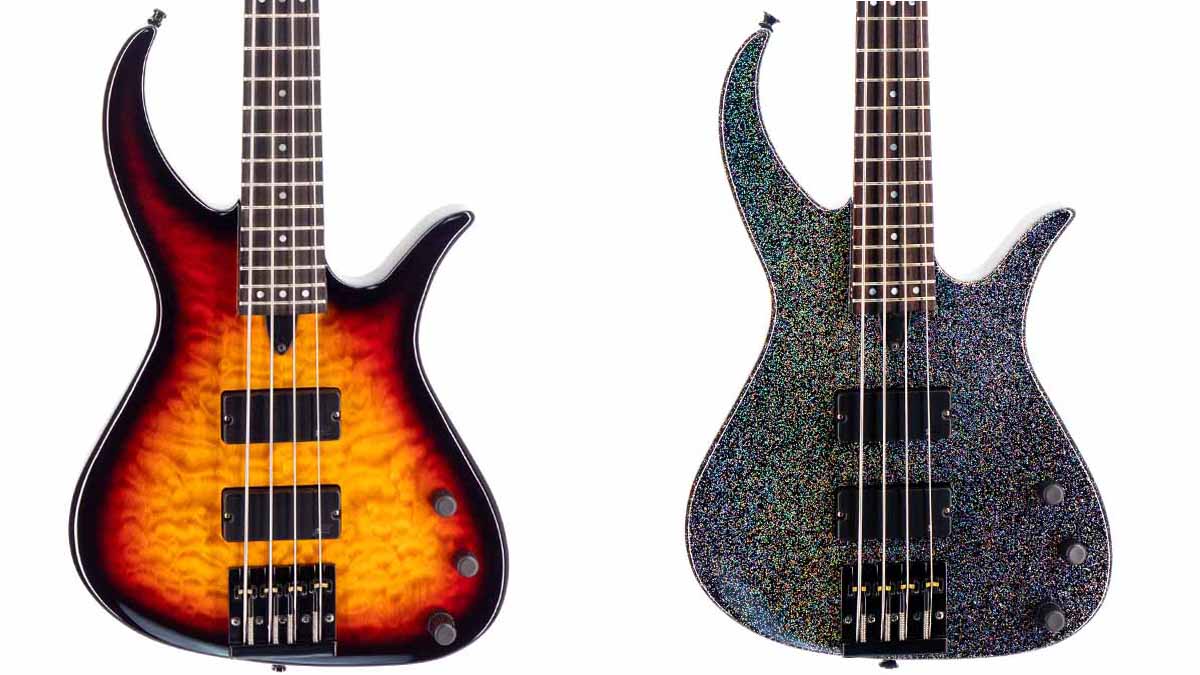Guitar World Verdict
Very capable basses, very highly recommended, these 2020 Manson E-Basses are instruments for serious amateurs and professionals who seek a bass that's great looking but practical, too.
Pros
- +
They look the part.
- +
Tones are exceptional.
- +
Very playable basses.
Cons
- -
No passive options.
You can trust Guitar World
Any bass guitar bearing a famous name gains more than its fair share of attention, especially when there’s a significant price tag attached – and if the name is that of a member of Led Zeppelin, that attention is doubled, not least from us.
We’ve been keeping track of John Paul Jones’s association with luthier Hugh Manson for many years, so we’re very interested indeed to see how the latest iteration of JPJ’s famous Manson stacks up, with a Standard bass alongside for comparison.
Build Quality
This pair of basses were crafted in the Czech Republic before making their way to Ashburton in the UK for a final setup and inspection. Both arrive in Hiscox cases, and when you pull them out, they’re immediately appealing. Both feature through-neck construction, a mahogany body core, a three-piece maple neck, gloss finishing throughout, and matching headstocks.
The body design is familiar and fits the player well, thanks to the contouring that has been added to the rear of the body. There is no chamfer on the upper body bout, but the extended upper horn and extensive lower cutaway benefit the balance and the player’s access to the upper regions of the 24-fret fingerboard.
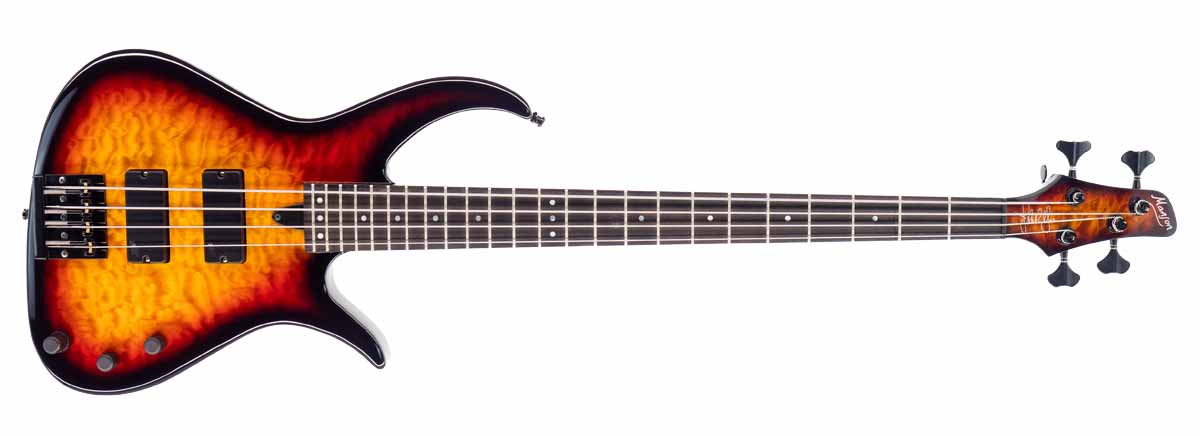
The balance of both basses is commendable; they sit perfectly when resting on the player’s knee, helped by the reduced dimensions of the tailored headstock.
Note the inclusion of JPJ’s signature on the headstock of the Signature model – you expect it, of course, but it’s still a cool touch. The Signature model feels a little more substantial, but both basses are sturdily built, and feel tough and durable.
The more costly bass features a quilted maple top finished in an Aged Vintage Cherry Sunburst, although an optional Luthier’s Choice top, with more intense figuring, is available for an additional $100 upcharge. The Standard bass sports a finish which Manson have very aptly described as Night Sky Holosparkle.
The hardware on both basses is solidly attached and of the expected high quality, with Gotoh machine heads and Hipshot Kickass bridges permitting action, intonation, and string-spacing adjustments to be made as required.
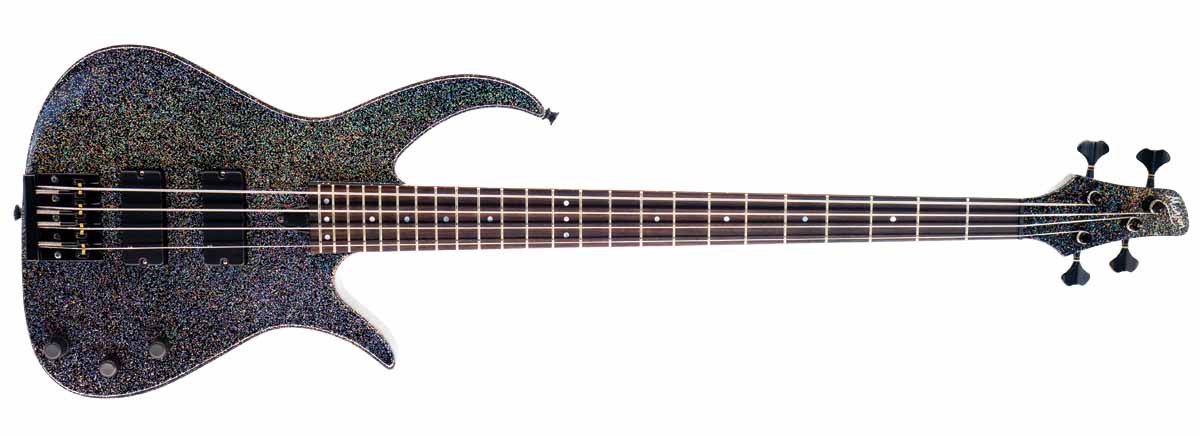
A Hipshot Bass Xtender has also been incorporated into the Signature model. The control sets are relatively simple, with pots for volume, pickup pan and stacked treble and bass, offering cut and boost options.
The Aguilar pickups and active circuitry are an obvious match for each other and promise much, but there’s no passive option – a minor point for most players, admittedly.
Flip these basses over and you’ll see separate battery and control compartments, both of which are neat and tidy inside, as well as professionally shielded. Truss rod access can be found at the base of the necks, both of which feature graphite reinforcement rods for extra rigidity.
The finishes of both instruments are also featured on the rears of their respective necks – and while gloss necks aren’t for everybody, the finishing is exemplary.
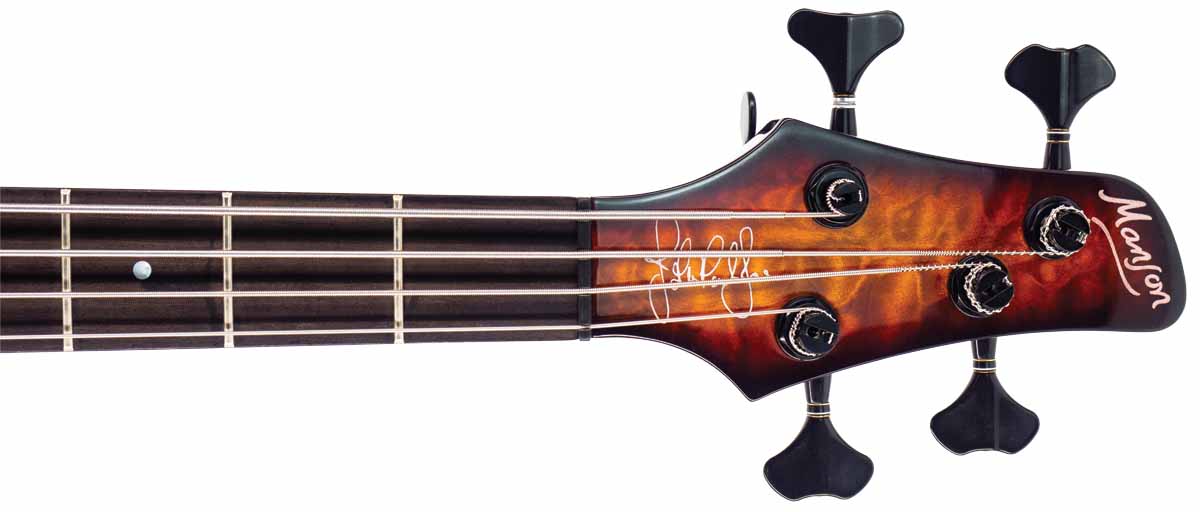
Sounds And Playability
Although these basses are similar in terms of build and construction, one of the major differences is the fingerboard lumber, with ebony replacing rosewood on the Signature model.
Naturally, this affects the tone somewhat, ebony being a harder lumber with a very focused attack; playing the basses acoustically makes the difference obvious. The Signature bass has a harder, more forthright tone, but both have impressive resonance and sustain.
Plugged in, does this tonal responsiveness continue? It certainly does – in fact, the circuitry and tone options simply elaborate on the acoustic tones. With both EQs set flat, there is a noticeable tonal difference between the basses, which I attribute to the fingerboard materials.
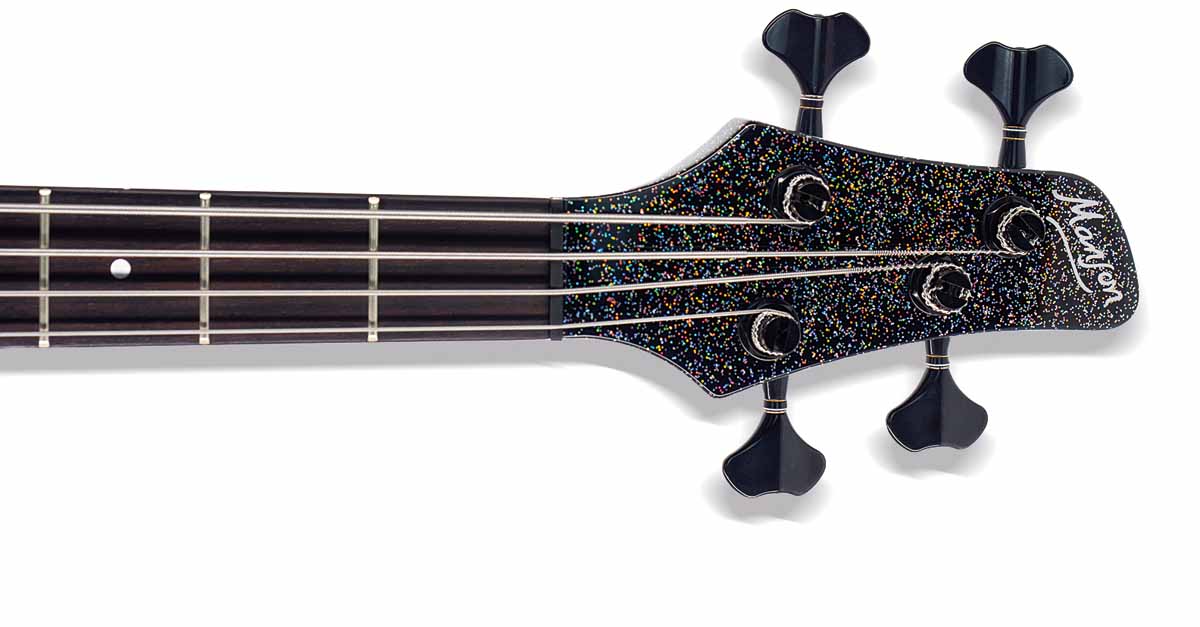
Neither is superior – it’s simply down to your tonal preference, so try both instruments if you’re considering a purchase. Panning between the pickups on both instruments, the delivery is full and powerful no matter which unit or units you select.
The neck pickup is broad and full with a pleasing low-mid rasp; pan across to the bridge pickup and you’re met with a fat honk that is fuller than you would usually expect from a single-coil unit, such is the power of a humbucking pickup in the bridge position.
With both pickups selected, the sonic display is full and detailed, with plenty of power on tap, and this is matched with a throaty mid-range performance and a very acceptable top-end clarity. Add some EQ to the signal and fingerstyle, pick and percussive playing styles all benefit, thanks to the well-matched electronics package.
The tone across the whole neck, on both instruments, is conveyed extremely well – if you like your bass to have definition, you’ve got it, and if you need firmness, the Aguilar nine-volt OBP-2 circuit will provide that too.
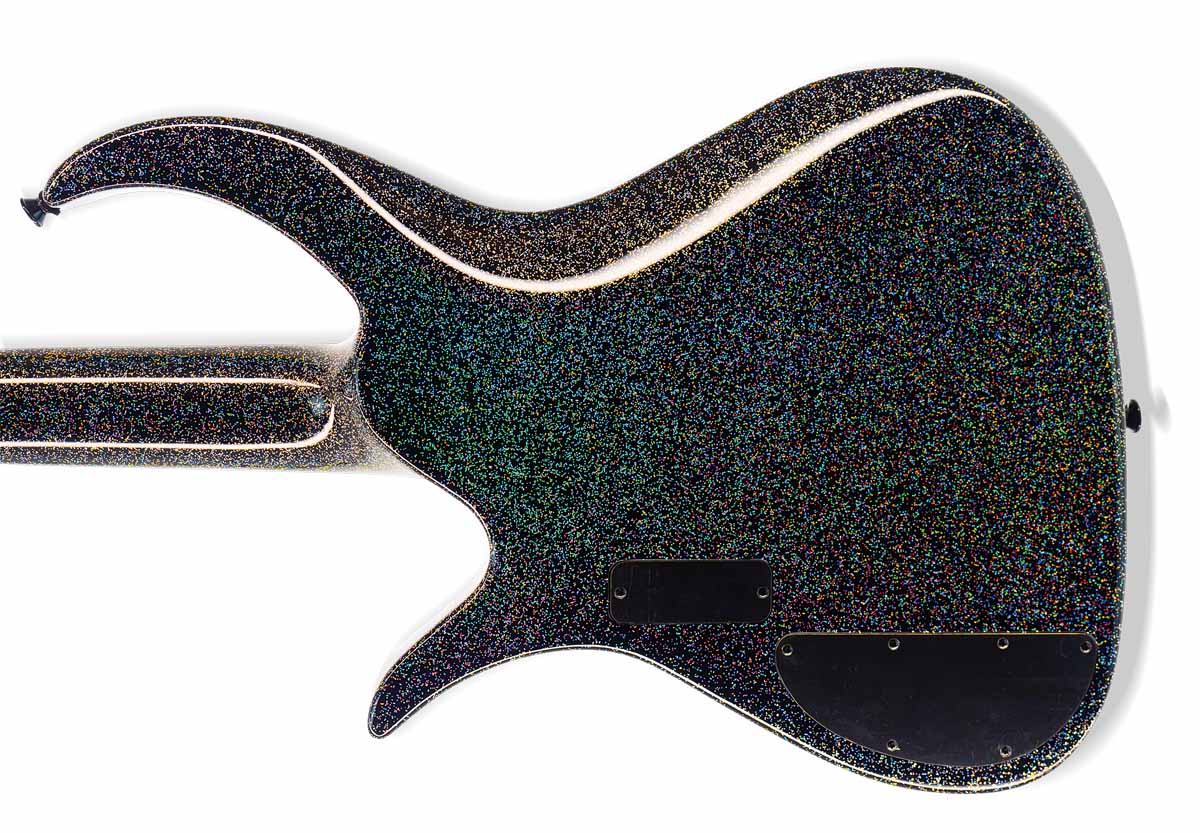
The treble control is very usable indeed, never becoming thin or sounding like someone hitting a typewriter key; the bass EQ is equally finely adjusted, but use with prudence as a little goes a long way.
Both basses score high marks for playability. The familiar 34” scale and 19mm string spacing combine as you’d expect with the 40mm nut width, fitting the fretting hand perfectly, as does the shallow D-shaped neck profile. The weight is distributed evenly, and while the bodies aren’t slim, the proportions work perfectly and ergonomically.
It should also be pointed out that both basses are very responsive to the individual’s playing style and how you attack the strings; if you want a biting clank, you can have it, but if you require a more refined, sweeter fingerstyle tone, that can be dialed in relatively easily. Not only do these basses have looks and functionality, they have the sounds to match, too.
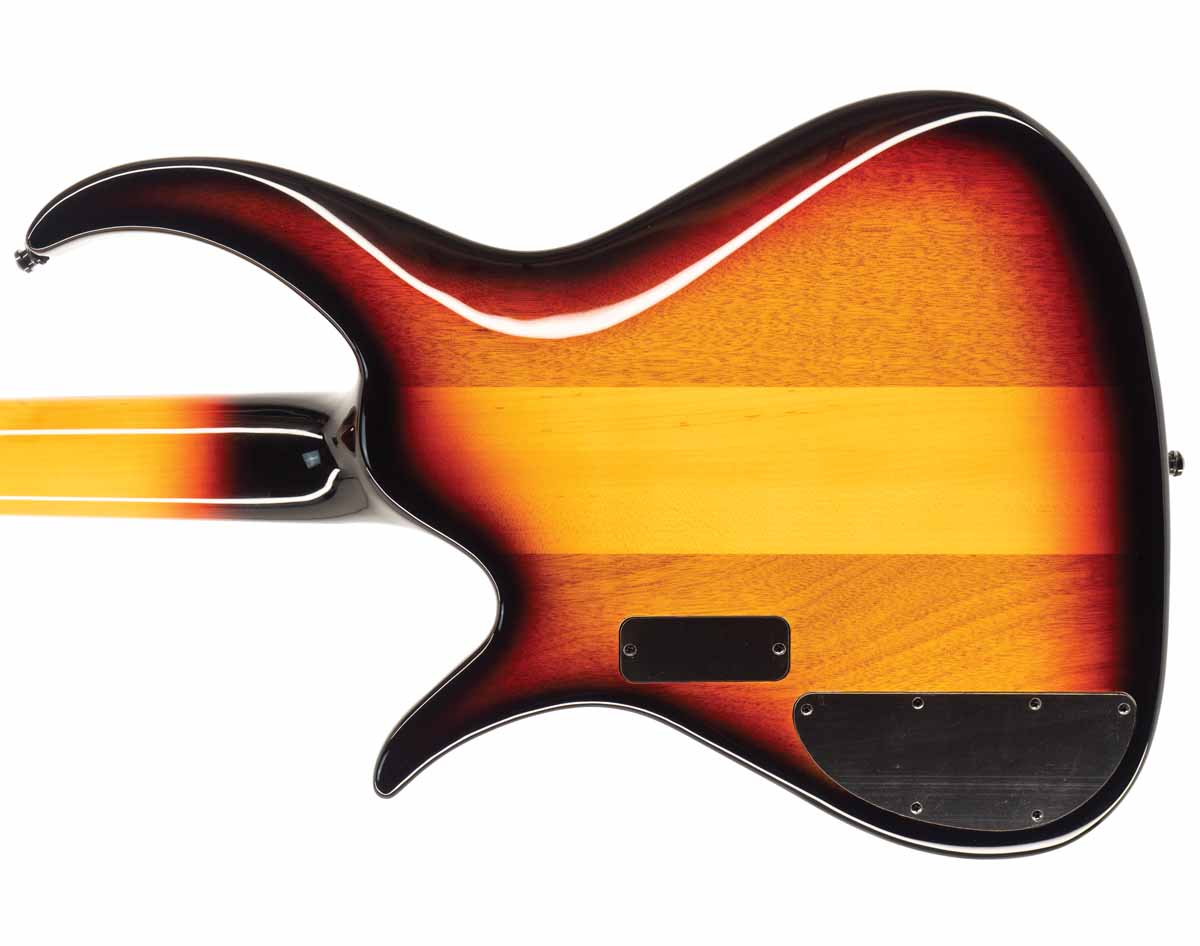
Conclusion
The sheer quality on display here is considerable in every department—the only possible omissions that come to mind are a mid control – which can be remedied relatively easily – and the aforementioned passive option.
Manson faces significant competition at these price points, but these basses are more than capable of fighting John Paul Jones’s corner, or anybody else’s for that matter, and would stand up well against competition of similar specification. Try one for yourself.
Specs
Manson John Paul Jones Signature E-Bass
- Price: £2399
- Made In: Czech Republic
- Colour: Aged vintage cherry sunburst
- Body: Mahogany with quilted maple top,gloss finish
- Neck: Maple, three-piece laminate, gloss finish, matching headstock
- Scale and string spacing: 34”, 19mm (adjustable)
- Neck Joint: Through-neck
- Nut Width: 40mm
- Fingerboard: Rosewood
- Frets: 24
- Pickups: Aguilar DCB humbuckers x 2
- Electronics: Aguilar OBP-2, 9-volt, 2-band EQ
- Controls: Volume, pickup pan, stacked bass and treble (cut/boost) Hardware | Black hardware, Gotoh machine heads, Hipshot Kickass 3D bridge
- Weight: 4.1kg / 9 lbs
- Case/gig bag included: Hiscox case
- Left-hand option available: No
- Contact: Manson Guitar Works
Manson Standard E-Bass
- Price: £1899
- Made In: Czech Republic
- Colour: Night Sky Holosparkle
- Body: Mahogany with maple top, gloss finish; Night Sky Holosparkle option costs £1899
- Neck: Maple, three-piece laminate, gloss finish, matching headstock
- Scale and string spacing: 34”, 19mm (adjustable)
- Neck Joint: Through-neck
- Nut Width: 40mm
- Fingerboard: Rosewood
- Frets: 24
- Pickups: Aguilar DCB humbuckers x 2
- Electronics: Aguilar OBP-2, 9-volt, 2-band EQ
- Controls: Volume, pickup pan, stacked bass and treble (cut/boost) Hardware | Black hardware, Gotoh machine heads, Hipshot Kickass 3D bridge
- Weight: 4.1kg / 9 lbs
- Case/gig bag included: Gig bag (upgrade to a Hiscox case for £109 extra)
- Left-hand option available: No
“I used to weigh my guitars and use the heaviest one. As I’ve got older and my back’s got worse, lighter guitars are definitely better”: Lee Malia’s Jackson signature completes a full circle 20 years in the making – and it redefines what a Jackson can be
“It holds its own purely as a playable guitar. It’s really cool for the traveling musician – you can bring it on a flight and it fits beneath the seat”: Why Steve Stevens put his name to a foldable guitar
